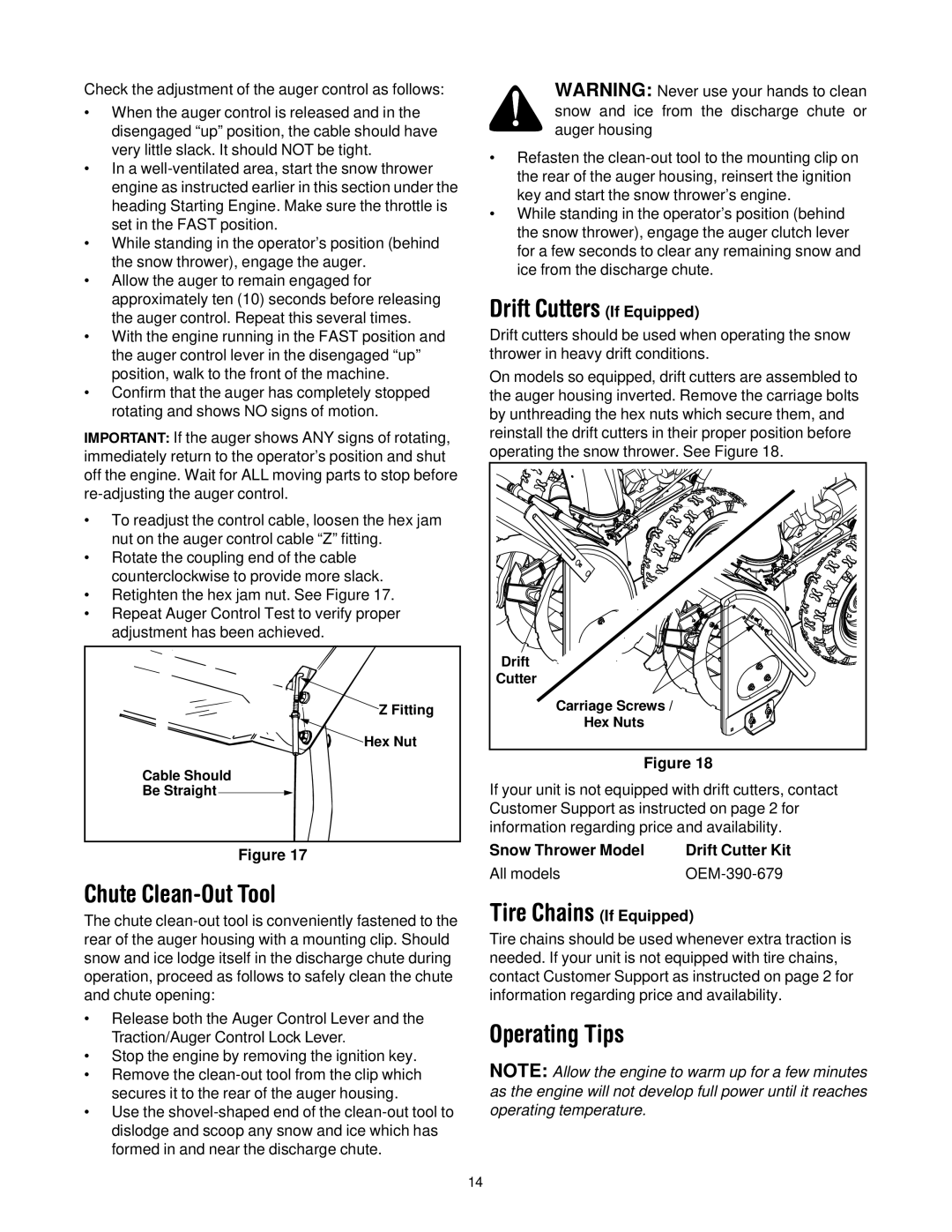664G, 644E specifications
The MTD 644E and 664G tractors represent a significant leap in agricultural technology and efficiency, designed for diverse farming applications. Known for their robust build and advanced features, these models cater to both small and large-scale agricultural operations.Starting with the MTD 644E, it is powered by a state-of-the-art diesel engine, providing a reliable performance that enhances productivity. The engine delivers impressive horsepower, allowing farmers to tackle various tasks effortlessly. Its fuel efficiency is a standout feature, ensuring reduced operational costs while still meeting demanding farm requirements. The 644E also features a compact design, making it highly maneuverable in tight spaces while maintaining a sturdy construction that guarantees durability in rugged conditions.
On the other hand, the MTD 664G offers slightly higher horsepower, making it suitable for more intensive agricultural work. This model is equipped with a more advanced engine management system that optimizes performance and fuel consumption, ensuring that farmers can work longer hours without frequent refueling. The 664G’s larger frame accommodates additional implements, expanding its versatility for tasks including plowing, tilling, and harvesting.
Both models are built with user-friendly controls, allowing operators to focus on their tasks without unnecessary distractions. The ergonomic seating and intuitive interface are designed to minimize fatigue during long working days. Additionally, these tractors come with a range of safety features, including effective braking systems and visibility enhancements that prioritize operator safety.
Technologically, both the 644E and 664G incorporate precision farming features that allow for better resource management. Implement compatibility enables seamless integration with various agricultural tools, giving users flexibility in their operations. Regular software updates ensure that the tractors remain at the forefront of agricultural technology, further enhancing performance and efficiency.
In summary, the MTD 644E and 664G tractors are tailored for modern farmers seeking reliability and efficiency. Their powerful engines, compact designs, and cutting-edge technology make them indispensable tools on any farm, capable of handling a multitude of agricultural tasks with ease and precision.

